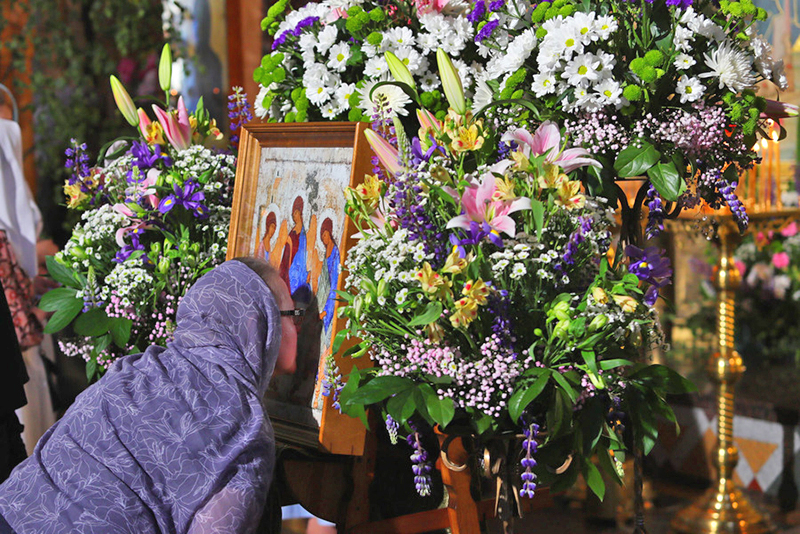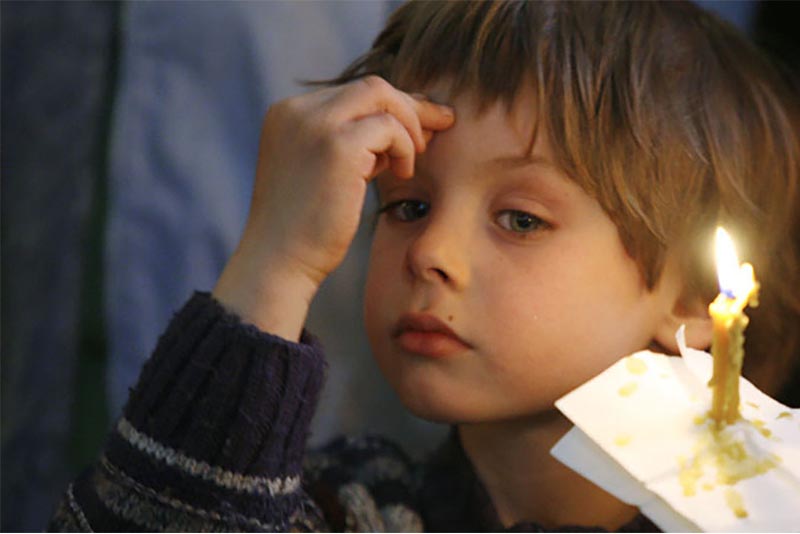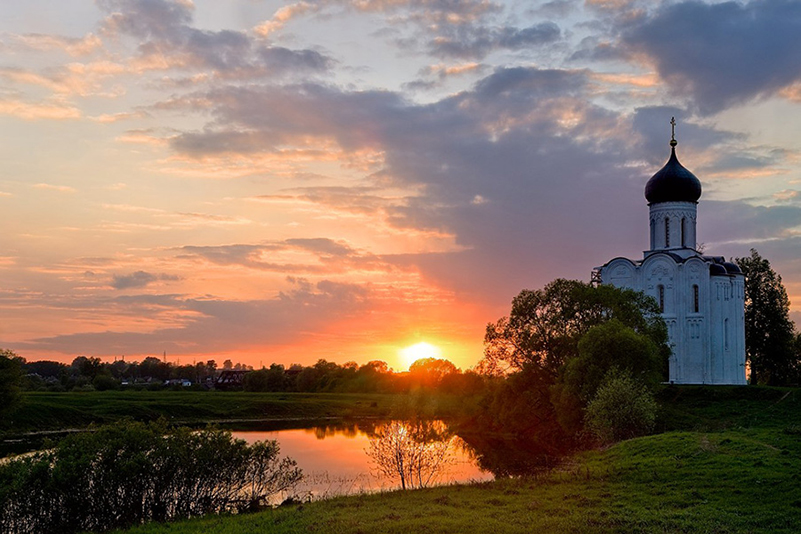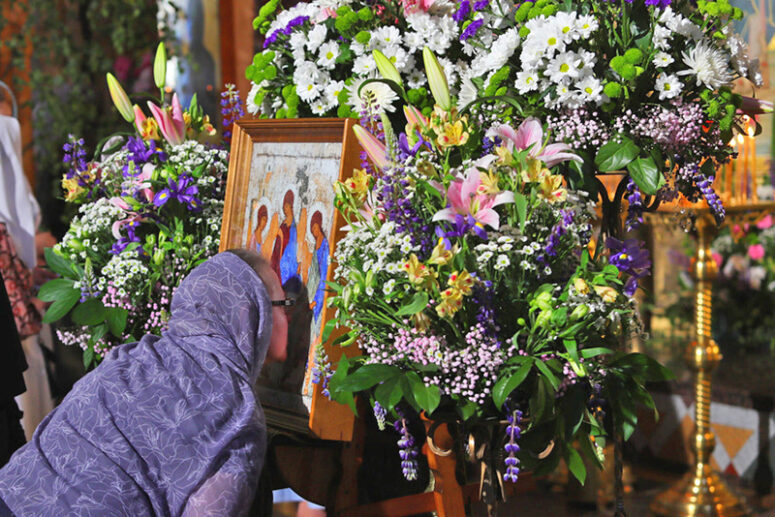
The Feast of the Holy Trinity, or Pentecost, commemorates the descent of the Holy Spirit on the apostles that bestowed on them the spiritual gifts for their missionary endeavours. It is one of the twelve great feasts of the year, second only to the Pascha.
The meaning of Pentecost in the Orthodox Church
Pentecost is celebrated as the birthday of the Church. The disciples of Christ did not venture into the world to preach the Gospel until the Spirit of God descended on them. The feast also takes a central place in the church doctrine, as the descent of the Holy Spirit unveiled the mystery of the three Persons of the Triune God.
References in the Bible
The Jews already celebrated the feast of Pentecost before the coming of Christ. They called it the Shavuot, which they observed on the fiftieth day of the Passover. The Shavuot commemorated the giving of the Torah to the Jews on Mount Sinai. It was also the Feast of the Harvest when the Jews made an offering to the Lord from the first harvest from their fields.
In the New Testament times, the feast day acquired a very different meaning. Before His Ascension, the Lord Jesus Christ instructed His apostles to remain in Jerusalem. He promised that they would be baptised with the Holy Spirit in Jerusalem. As we read in the Scripture, they received the power of the Holy Spirit and became His witnesses in Jerusalem, and in all Judea and Samaria, and to the ends of the earth. (Acts 1:3-8).
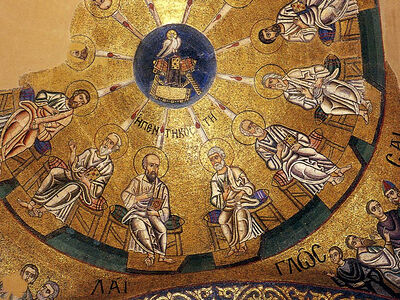
On the day of the Jewish Pentecost, the apostles gathered for prayer. Suddenly a sound like the blowing of a violent wind came from heaven, and a crowd came together in bewilderment. The noise filled the whole house where they were sitting, and they saw what seemed to be tongues of fire that separated and came to rest on each of them.
At this point, a miracle happened. Each of the people who gathered outside heard from the Apostles their languages being spoken. The people were bewildered, and they had come from many different places – `Parthia and Mida, Elam and Mesopotamia, Judea and Cappadocia, Pontus and Osia, Phrygia and Pamphylia, Egypt and Libya, Rome, Crete and Arabia. They came from all across Asia Minor, the Arabian Peninsula, present-day Italy and Greece, Iran and Afghanistan, Egypt and Libya.
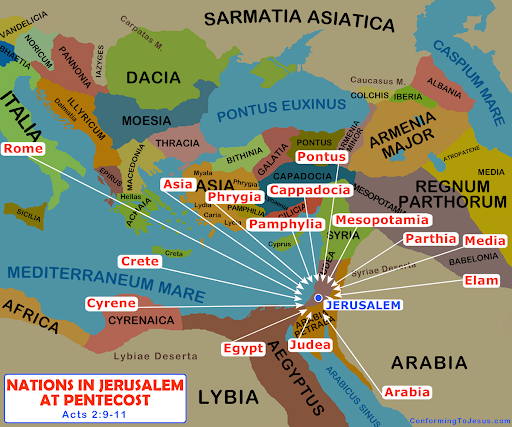
On the day of the Pentecost, the apostles preached repentance, baptism, and the messianic and divine dignity of Jesus Christ. The biblical narrative concludes with a description of the voluntary baptism of at least three thousand people and the news about scores of new believers joining the Church every day.
The date of the Feast of the Holy Trinity
Pentecost or the Feast of the Holy Trinity is celebrated in the Orthodoх Church fifty days after the New Testament Easter. Nevertheless, the Holy Spirit descended on the apostles as they were celebrating the Jewish Pentecost, counted from the Old Testament Passover.
Church worship on the day of the Pentecost
The worship services on the Pentecost are doubly solemn and ceremonial.
It is a common tradition to decorate the church with flowers, tree branches and decorative plants. Coincidentally, the clergy also wear green liturgical vestments.
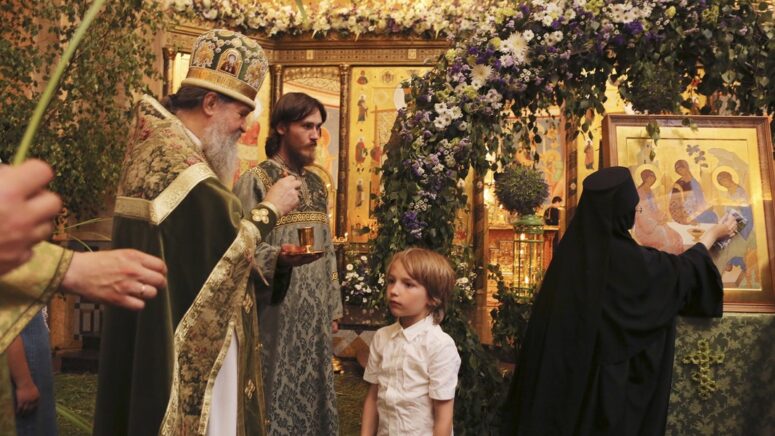
We do now know for certain the origins of this tradition. But we do know that even in the Old Testament times, the Jews decorated their synagogues with new plants on the day of the Pentecost.
On the eve of the feast, an all-night vigil is celebrated, with readings from the Old Testament on the Holy Spirit. One narrates the descent of the Spirit upon the elders of the Old Testament (Num 11:16-17, 24-29), and the other two prophecised the descent of the Holy Spirit upon the apostles (Joel 2:23-32, Ezek 36:24-28).
The usual liturgical hymns of a Sunday Liturgy are not chanted at the liturgy of the Pentecost. It is immediately followed by the ninth hour and the vespers.
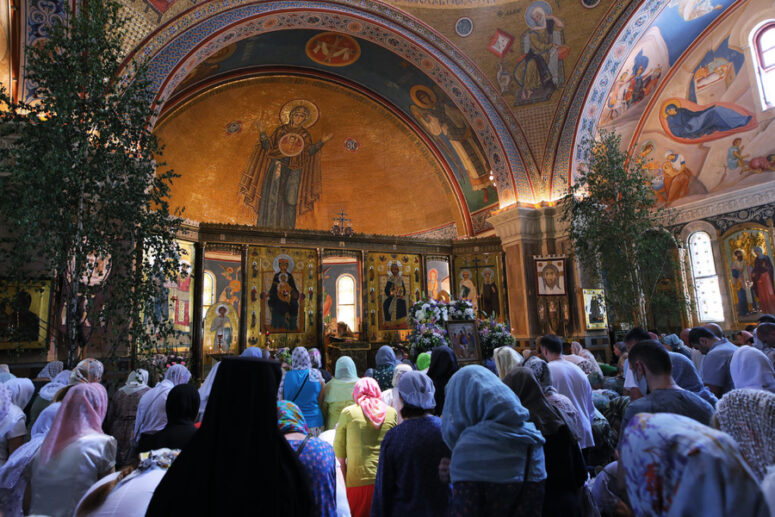
For the first time after Easter, the faithful chant the prayer “Heavenly King” and make kneeling bows.
Troparion of the feast
A troparion is a concise statement of the meaning and significance of the feast being celebrated.
Troparion (Tone 8)
Blessed art You O Christ Our God
You have revealed the fishermen as most wise
By sending down upon them the Holy Spirit
Through them, You drew the world into Your net
O Lover of Man, Glory to You!
The Troparion calls the apostles “wise fishers”, casting the net of the faith over the entire universe. This comparison resonates with the Gospel. “Come, follow me,” Jesus said, “and I will send you out to fish for people.” At once, they left their nets and followed him. The idea of the apostles casting their nets across the universe is a call for the spread of Christianity around the world.
Kontakion of the feast
А kontakion lays down the inner meaning of the feast.
Kontakion (Tone 8)
When the most High came down and confused the tongues,
He divided the nations;
But when he distributed the tongues of fire
He called all to unity.
Therefore, with one voice, we glorify the All-holy Spirit!
The Kontakion of the Trinity juxtaposes two biblical events – the separation of the languages in the building of the tower of Babel (Genesis 11:1-9) and the descent of the Holy Spirit upon the apostles. While the former event was divisive, the latter restored unity among the people.
Magnification of the feast
Magnification is a short hymn of the Russian Church that praises and glorifies the Lord, His saints or angels. The Magnification of the Trinity glorifies each person of the Triune God.
Icons of the Pentecost
The Icons of the Pentecost depict the descent of the Holy Spirit on the apostles as they prayed. Several small details make them distinct from all others.

The central seat in the gathering of the apostles is empty: Christ has already ascended to Heaven. Remarkably, the apostles are seated in the same way as during the Last Supper – with some exceptions.
At the Last Supper, Peter sat at the right hand of Christ, and John the evangelist at His left. However, in the icon of Pentecost, Paul takes the place of John. He could not have been among the apostles in the first place as he had not converted to Christ at the time. We find Apostle John sitting behind Paul.
The image of Paul is symbolic, indicating his primacy among the other apostles. In some copies, Paul is shown treading on Peter’s foot. This is supposed to show that although Paul was not among the apostles from the beginning, he surpassed all of them, including Peter, through his missionary accomplishment.
At the bottom of the ancient icons, the nations who gathered outside the house of the Apostles were also depicted.
А kontakion lays down the inner meaning of the feast.
The Kontakion of the Trinity juxtaposes two biblical events – the separation of the languages in the building of the tower of Babel (Genesis 11:1-9) and the descent of the Holy Spirit upon the apostles. While the former event was divisive, the latter restored unity among the people.
Magnification of the feast
Magnification is a short hymn of the Russian Church that praises and glorifies the Lord, His saints or angels. The Magnification of the Trinity glorifies each person of the Triune God.
We magnify You, O Christ, the Giver of life,
And we honour Your Most Holy Spirit
Whom You sent from the Father onto Your divine disciples
The heavens are telling the glory of God
and the firmament proclaims His handiwork
And all the host of them by the Spirit of His mouth
Glory to the Father, and to the Son, and to the Holy Spirit,
Now, and ever and unto ages of ages.
Icons of the Pentecost
The Icons of the Pentecost depict the descent of the Holy Spirit on the apostles as they prayed. Several small details make them distinct from all others.
The central seat in the gathering of the apostles is empty: Christ has already ascended to Heaven. Remarkably, the apostles are seated in the same way as during the Last Supper – with some exceptions.
At the Last Supper, Peter sat on Christ’s right hand, and John the evangelist on his left. However, in the icon of Pentecost, Paul takes the place of John, who could not have been among the apostles in the first place as he had not converted to Christ at the time. We find Apostle John sitting behind Paul.
The image of Paul is symbolic, reflecting his primacy among the other apostles. In some copies, Paul is shown treading on Peter’s foot. This is supposed to show that although Paul was not among the apostles from the beginning, he surpassed all of them, including Peter, through his missionary accomplishment.
At the bottom of the ancient icons, the nations outside the house of the Apostles were also depicted. The intent was to show that the Holy Spirit sanctifies all men and women. Over time the depiction of the people of the world was succeeded by the image of a man in royal robes, typically with the inscription that says “Cosmos”. The idea was to underline that the Holy Spirit that descends on the Pentecost sanctifies all the people, but also the entire universe.
The Icon of the Holy Trinity and its interpretation
Only one image of the Holy Trinity is accepted by the Church and permissible in the icons. The Son of God appeared to the prophets of the Old Testament in different shapes before He became incarnate. The Holy Spirit appeared as a dove and flames of fire, but God the Father never revealed Himself to any man, and therefore graphic depictions of Him would generally be considered inappropriate.
The only exception to this rule is the icon of the Holy Trinity by the Venerable Andrei Rublev. It shows three angels appearing to Abraham on Mount Moriah. This apparition is one of the most graphic references to the Holy Trinity in the Old Testament. The fact that the depiction is based on the Scripture and seeks to represent the image of God the Father as described therein makes it appropriate to the iconographic tradition of the Church.
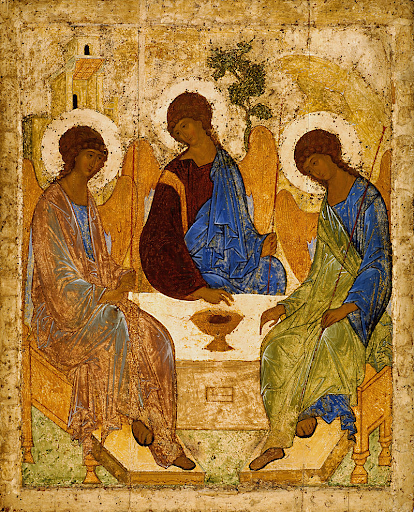
The iconographer sought to represent the Triune God and underline the equal standing of the persons of the Holy Trinity. The faces of the angels are identical, the figures differ only in garments. Any inscription indicating which angel represents which person of the Trinity makes the icon non-canonical.

